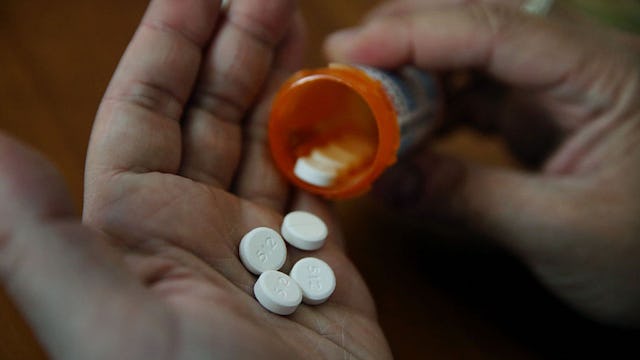Opioid Overdose Among Children Doubles, And We Have To Do Something About It

It’s no secret we have an opioid epidemic in this country, but when we think of who’s using and overdosing on drugs like heroin, Fentanyl and oxycodone, we don’t usually think of children and certainly not very young children.
But think again: according to a new study in the journal Pediatrics, the number of children between the ages of 1 and 17 admitted to hospitals for opioid overdose nearly doubled between 2004 and 2015. That’s right, doubled. Children – babies – are ending up in pediatric intensive care units (PICU) across the country because they are ingesting opioids.
You might be wondering how little kids get their hands on these drugs. It’s not like they’re hanging out on the street corner looking for a fix. They don’t have to. In most cases, kids stumble across their parents’ painkillers, said Dr. Jason Kane, a lead author of the study, in an interview with CNN.
“The thing that was a bit striking is that in the youngest children, those under six years of age, 20% of the ingestions were of methadone,” he said. “So you sort of have to ask yourself: where are they getting all this methadone from?”
Methadone is used to treat symptoms of withdrawal from opioids and is also prescribed as a painkiller.
While the study looked at children in three age ranges — 1 to 5; 6 to 11; and 12 to 17 years old — it didn’t account for how many of the overdoses were purely accidental and how many were the result of intentional drug use. It’s more likely, however, that teenagers would intentionally take opioids to get high or to inflict self-harm. It’s no surprise then that the kids in the oldest age range accounted for 60 percent of those admitted for drug overdoses. Of those, 4.4 percent were from heroin rather than prescription meds.
Meanwhile, children under the age of 6 were the second biggest group and made up a third of patients admitted for drug overdoses. How scary is that? The majority of those hospitalizations were the result of accidentally taking methadone or oxycodone, according to Kane.
Kids getting into medications meant for adults is nothing new. What’s different about this situation is the sheer volume of prescribed opioids that is accessible to kids. In 2016, more than 42,000 people died in the United States from opioid overdose, according to the CDC. That’s more than any other year on record. Forty percent of those deaths were from prescription drugs.
As more people seek treatment for their opioid addiction – which is a good thing – more meth is being prescribed. Add that to the already high rate of oxycodone use and that’s why we’re seeing an increase in children or “secondary victims” overdosing, added Kane.
Of the 3,647 children in 31 hospitals nationwide who were admitted after taking opioids, 43 percent ended up in the pediatric intensive care unit, according to the study. Besides indicating how ill — and in some cases, life-threatening — it is when children ingest opioids, this number is significant because there are approximately 4,100 PICU beds available across the country.
“So every time you put a child in a pediatric ICU bed, you’re using a very limited resource,” said Kane. “And if we fill our pediatric ICU beds with patients who have entirely preventable conditions, we will not be able to give those beds to patients who truly need them for unpreventable medical conditions.”
So how do we reduce children’s exposure to prescription painkillers and prevent these types of hospitalizations? Education is key, says Kane. Adults need to be hyper aware of the danger their meds pose to their children and take all measures to keep them out of reach. He recommends locking them away.
Then again, we don’t even legally require gun owners to lock up their firearms, so how can we expect people to keep their prescription drugs safely away from their kids? Unfortunately, the numbers prove this point: only 20 percent of adults keep their prescription medications locked up, according to a 2017 Consumer Reports Best Buy Drugs survey.
Other steps parents can take include talking to our kids about the dangers of prescription opioids. Show them a picture of various pills so they know what to avoid. If you take prescribed opioids, make sure you don’t accidentally leave any on the counter or the floor.
The study did uncover a bit of hopeful news: the mortality rate for children who end up in the PICU decreased from 2.8 percent from 2004-2007 to 1.3 percent from 2012-2015. Since the numbers show the rate of overdose among kids almost doubled, what this statistic shows is that hospitals are getting better at taking care of these kids – thank goodness. The primary emergency treatment is giving naloxone, which has it’s own set of side effects, but patients also require blood pressure and respiratory support.
Knowing my kids might not survive an opioid overdose is motivation enough for me to keep my Advil hidden, let alone any painkillers I might be prescribed. I hope it’s enough for the millions of adults who take opioids each year to take hard-core action when it comes to keeping these extremely dangerous drugs away from the children in their lives.
This article was originally published on